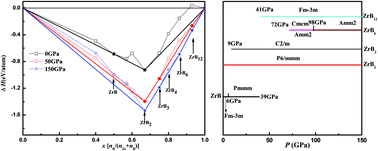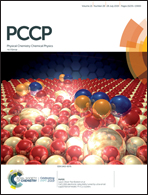Predicted superhard phases of Zr–B compounds under pressure†
Abstract
Boron-rich zirconium borides are potential candidates for superhard or multifunctional materials with excellent physical properties. Using first-principle methods with structure searching, various stoichiometric zirconium–boron compounds have been investigated under pressure. Four unexpected phases of Pmmm-ZrB, C2/m-ZrB3, Cmcm-ZrB6, Amm2-ZrB6 are uncovered. Structurally, the B–B bonding patterns evolve from zig–zag chains to triple graphite-like layers with the increase in B content. The three-dimensional covalent bonding networks of Zr–B and B–B were unraveled due to the observation of charge localization between B–B and B–Zr by electronic localization function analysis and crystal orbital Hamilton population. Interestingly, the predicted Cmcm and Amm2 phases for ZrB6 can be experimentally synthesized at moderate pressures and quenching can recover these products to ambient conditions as potential superhard materials due to their Vickers hardness beyond 40 GPa. Our work provides a key perspective toward the understanding of novel chemical bonding in B-rich transition metals compounds and gives direction for the experimental synthesis of superhard materials.



 Please wait while we load your content...
Please wait while we load your content...